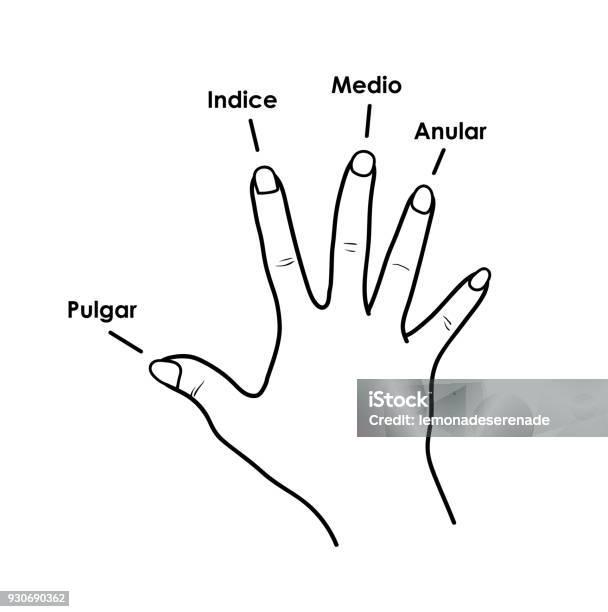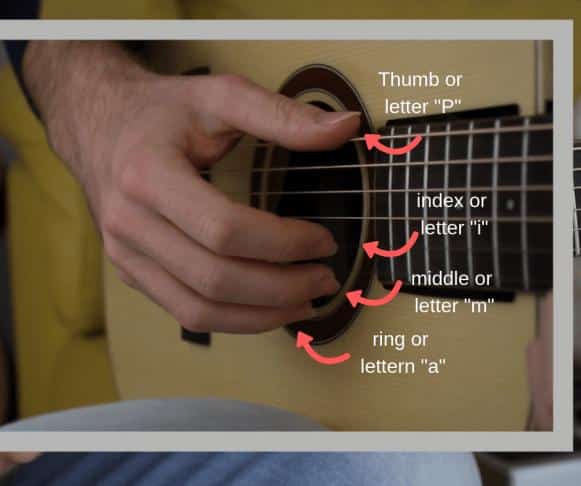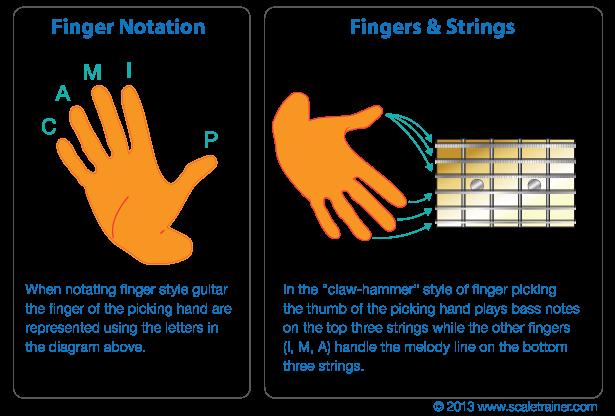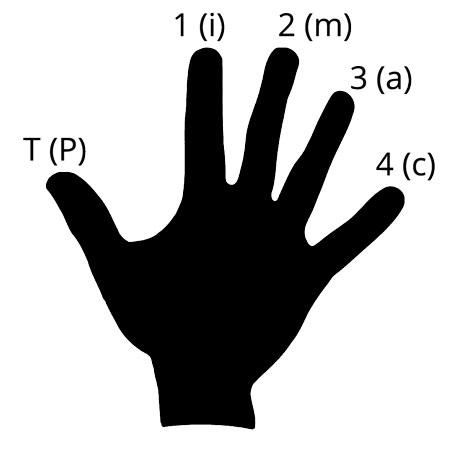Imagine holding your guitar, and with the simple strum of your fingers across the fretboard, you create mesmerizing music that evokes a whirlwind of emotions. Yes, and it isn’t magic; it’s the captivating power of PIMA fingerpicking.
With the flicker of the right set of fingers (‘p’ for thumb, ‘i’ for index, ‘m’ for the middle finger, and ‘a’ for ring finger), one can stimulate a medley of sounds, blurring the line between three distinct guitar styles – melody, harmony, and rhythm. All synchronizing into one harmonious swath of pure acoustic euphony is the wonder we call PIMA fingerpicking.
Much like me, you might be skeptical about the possibility of a single guitar technique offering so much. But believe me, it does. As a seasoned fingerstyle guitar player with three albums under my belt, I’ve traveled a long journey full of different guitar techniques. One technique that has greatly shaped my playing style and versatility is PIMA fingerpicking. Offering an effortless blend of melodious notes and harmonious sounds, this humble technique can transform a simple guitar into a complete orchestra.
Indeed, the world of fingerpicking tends to be traditionally dominated by the classical guitar genre. But if you pry open this musical Pandora’s box, you’ll find the influence of this treasured style encased in various other sectors, from jazz to folk, and even rock music. Regardless of genre, the unmistakable echo of PIMA is everywhere, making it a versatile and almost indispensable tool in the arsenal of a guitarist.
Delving more deeply into the realms of PIMA fingerpicking, you’ll discover how profound and multi-faceted this seemingly simple technique is. We will unravel this journey together, examining its roots, its role in classical music, and most importantly, my personal insights and recommendations on mastering this amazing guitar technique.
So, buckle up, grab your guitar, and once again, dare to explore the enchanting world of fingerstyle guitar playing. Let’s dive right into the captivating world of PIMA fingerpicking. Read on to discover how this unique technique can revolutionize your guitar playing skills.
Origins of PIMA Technique
PIMA in Classical Music

While unfolding the nuances of the PIMA technique, it’s impossible not to acknowledge its roots in classical music. Like leaves on a musical tree, plucked notes dance in rhythm, their origins and growth deeply intertwined with classical guitar. My first encounter with PIMA was while perusing the markings of guitar pieces from the classical periods, a vivid experience that still resonates in my musical journey.
These enriching moments of revelation offered an understanding of how PIMA beautifully amalgamates with the elements of classical music: the intricate melodic lines, harmonious layers, and rhythmic complexity. The process of correlating these traditional music elements with guitar fingers notation was illuminating in itself, unravelling a world where I began to align the thumb (P), index (I), middle (M), and annular (A) fingers with specific strings on the classical guitar.
The notation would specify that P would play the bass strings, while I, M, and A, collectively known as PIMA, would return to the treble strings. This began to make sense when I saw these notations on the classical guitar works. As my fingers danced on the strings, reproducing the classic melodies, rhythms, and harmonies, I experienced the unique correlation between classical music and the PIMA technique, giving birth to a beautiful blend of the music’s depth and the technique’s precision.
Delving deeper, it became clear to me, that the P (Thumb) often acts as a pseudo-conductor, directing the rhythm and pace, complemented by the I (Index), M (Middle), and A (Ring) fingers that weave intricate melodies whilst truly adhering to the roots of classical music. As we traverse further into the understanding of PIMA, remember its classical origins and embrace them as foundations underlying this meticulous and spellbinding technique.
Understanding the PIMA technique
The Role of Each Finger

Following a deeper grasp of the PIMA technique, let’s explore the important role each finger plays while playing guitar with fingers. Understanding each digit’s role will transform your acoustic guitar sound’s delivery, enhancing both creativity and technical proficiency. As I discovered, experimenting with these roles can birth distinctive fingerstyle guitar tones, as experienced while crafting my albums.
The thumb (P) plays a crucial role, laying down a rhythmic foundation. Typically, it plucks the three highest strings – E, A, and D. Think of the thumb as your bass player, delivering the rhythmic pulse of your music. Its independence and control are fundamental as they form the spine upon which other notes find their place.
The index (I) and middle (M) fingers convey the melody, handling the B and G strings. These fingers’ nimbleness plays an essential role in your music’s detailed expression and nuance, from quick solo runs to rhythmic strumming patterns.
The ring finger (A), on the other hand, is often relegated to the high E string. Despite the much-debated necessity of the ring finger in finger picking, I’ve found it a subtle contributor to the fingerstyle guitar’s richness. Including the ring finger in the mix can result in fascinating harmonic possibilities, adding a touch more dimension and complexity to your playing.
Manipulating the roles of your thumb, index, middle and ring finger opens up a canvas of various hues and textures on your acoustic guitar. By giving thought to the part each digit plays, you begin to tap into the PIMA technique’s magic, just as I did. It’s like having a full band right at your fingertips; your thumb playing bass, while your index and middle finger pick out the melody, and your ring finger adding embellishments and flourishes.
As we slide into the process of applying PIMA to fingerstyle guitar, it’s important not to view these roles as rigid rules. Instead, see them as guides to provide a foundation. Once you have understood their basic function, push the boundaries, and experiment. Creating your unique style, like I did, involves challenging norms and diving into a thrilling journey of exploration.
Patient practice and a deep understanding of each finger’s role can contribute significantly to your finger picking prowess. Trust me, it’s a rewarding pursuit, whether you’re aiming to charm audiences or merely hoping to figure out your own sonic voice on the guitar.
Applying PIMA to Fingerstyle Guitar

Having honed my skills in fingerstyle guitar, PIMA has been an integral part of my evolution as a guitarist. Now that we understand the fundamentals of the PIMA technique and each finger’s role, let’s delve into how you can apply it to your fingerstyle guitar technique, as I did.
Fingerstyle on both the nylon string and steel string guitar can be greatly enhanced by incorporating the PIMA technique. Essentially, PIMA instills a sense of order in your picking hand fingers, bringing about dexterity and precision. The main attraction of fingerstyle guitar is its ability to express the many layers of a piece, and using the PIMA technique, we can achieve this more effectively.
Incorporating PIMA to your fingerstyle technique is a process of embedding each pattern into your muscle memory through consistent practice. Start slow – use a metronome to keep steady tempo and practice individual PIMA patterns repeatedly. I’m speaking from personal experience: accuracy and music expression only comes with slow and meticulous practice. You’ll eventually find your fingers automatically falling into the right positions without having to consciously direct them.
A big part of this process is also understanding which strings are assigned to which fingers in the PIMA format. In classical guitar, the thumb handles the bass strings (E, A, D), while the Index, Middle, and Ring fingers are assigned to the treble strings (G, B, high E). Experimenting with this string assignment inside various musical contexts will sharpen your versatility and adeptness in the fingerstyle technique. It is ultimately about finding your comfort zone for each individual piece you choose to play.
The beauty of the nylon string guitar is its ability to produce warm and full-bodied tones. When playing a fingerstyle piece on a nylon string instrument, the PIMA technique becomes even more prominent. It’s as if the instrument and technique were made for each other; each finger can pluck the strings in its own distinct manner, creating rich textures and complex tonalities.
To progress in using PIMA with the fingerstyle technique, I would also recommend learning and analyzing pieces composed by fingerstyle masters. Doing so will broaden your musical vocabulary and also expose you to different ways of applying the PIMA technique. From my experience, every fingerstyle guitarist has their unique way of utilizing the PIMA technique in their music.
In remainders of this guide, we’ll delve deeper into how to practice the PIMA technique and answer some of your potential questions. Just remember – the PIMA technique isn’t a hard and fast rule but rather a practical guideline that you can explore and modify according to your needs. Playing fingerstyle guitar should always be an expression of your musicality, and techniques like PIMA can help bring your melodic ideas to life.
Practicing the PIMA technique

Approaching a new guitar technique is always exciting, filled with the promise of refined skills and a fresh sound. That’s why I found myself drawn to the PIMA technique. Over the course of my musical journey, countless hours have been spent with my acoustic guitar, trying to perfect the subtle nuances in fingerpicking this technique requires. With decades of practice under my belt, I’ve identified some best approaches to hone the PIMA technique. Now, I wish to reveal the secrets behind my practice habits and how I managed to keep myself aligned to this intricate guitar picking method while also allowing for innovating my style.
They say practice makes perfect, but what if you’ve been practicing the wrong way? Let’s tune the strings of practice and craft perfection with the PIMA technique. Your practice sessions need to be deliberate, purposeful and strategic. From my experience, I believe intentional practice, rather than mindless repetition, is what truly sharpens your skills in the PIMA technique.
The PIMA technique is more than just a guitar-picking style. It’s an art form that requires commitment, focus, and certainly practice. Your practice routine should be devised around the requirements of the technique. To begin with, practicing with a metronome is a great way to ensure you are maintaining a consistent rhythm while also assisting in speeding up and slowing down your playing. This is particularly useful for an acoustic guitar technique like PIMA which commands accurate timing.
I remember my early days with PIMA, where I used to focus exclusively on the ‘P’ – thumb, ensuring my thumb had the right motion and strength. Only then did I move to the ‘I’, ‘M’, and ‘A’, the remaining three fingers. This strategic, phased practice enabled me to master the roles of each finger, carving out my own style within the constraints of traditional PIMA. Always remember, the key lies in diligent, sustained effort.
Another significant aspect of practicing the PIMA technique is balance. It’s crucial to perfectly balance your right-hand actions while maintaining the smooth rhythm of your left hand. A lack of this balance might deter from fluidity and clarity, muddling the musical note articulation crucial to this technique. Just like every endeavor in life, achieving the right balance takes time and is learned through practicing accurately.
One thing I can’t emphasize enough is patience. Patience is a musician’s best friend. Learning a new guitar technique isn’t easy, and it’s essential to give yourself the grace to make mistakes, learn from them, and grow. Remember, every accomplished musician has faced challenges and overcome them with persistence and, most importantly, by cherishing their love for music. When you find yourself hitting a roadblock or feeling like you’re stagnating, just remember why you picked up the acoustic guitar in the first place. Harness that initial spark, hold onto your passion, and keep practicing.
The PIMA guitar picking technique can significantly enhance your musical repertoire once mastered. Despite the initial difficulties that you might encounter while learning it, with a well-structured practice plan, patience, and perseverance, you will not only perfect your PIMA technique but also find a new way to express your creativity through the strings of your guitar.
FAQs
What is the PIMA Guitar Fingerpicking Technique?
Why is it called PIMA?
How can one learn the PIMA technique?
Why should one use the PIMA technique?
Conclusion
From my humble beginnings with classical guitar to charting my own course in fusion genres, the PIMA technique has been a constant companion. Sharing my own story, steeped in the intricacies of PIMA fingerpicking, inspires me to keep pushing my own boundaries and skill set. I hope my pearls of wisdom inspire you, just as PIMA continues to inspire my music.
Just as we have journeyed together through the Origins of PIMA Technique, explored its role in Classical Music and understanding of the PIMA technique, there’s more to be covered, in The Role of Each Finger, Applying PIMA to Fingerstyle Guitar, and Practicing the PIMA technique sections and beyond.
So, what’s next?
Once you’ve mastered the PIMA technique, how can you keep pushing your boundaries? Let’s explore the future possibilities of guitar playing with PIMA…
The PIMA fingerpicking method serves as a powerful tool to transform the way you play classical guitar. It’s a roadmap that guides guitarists, both armature and professionals, towards acquiring dexterity, precision, and clarity. And yet, despite its rich history and technique, it’s only one part of your musical journey. The world of classical guitar is expansive. Truly mastering the PIMA technique is just the first step.
In my own exploration, I’ve discovered that learning PIMA breaks down the barriers within fingerstyle guitar and opens doors to new musical expressions. Yet, the journey doesn’t end here.
The future possibilities of guitar playing with PIMA are limitless. This will challenge your dexterity, test your patience, but above all, refine your musical finesse. Mastering PIMA can lead you to explore other genres, push your creative boundaries, and inspire you to pioneer new musical frontiers. The music world is vast, and your journey through it with the PIMA technique is only beginning.